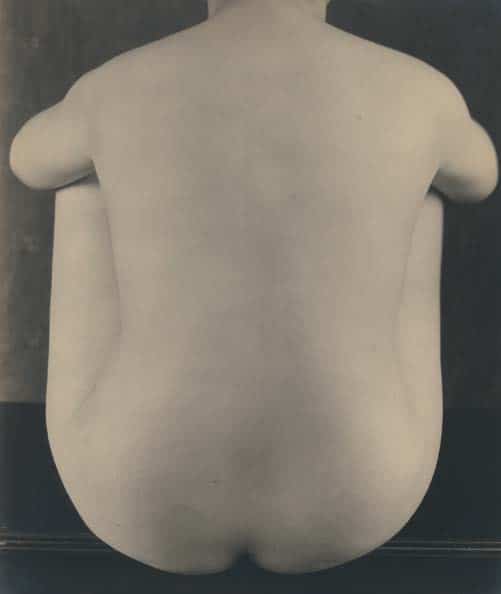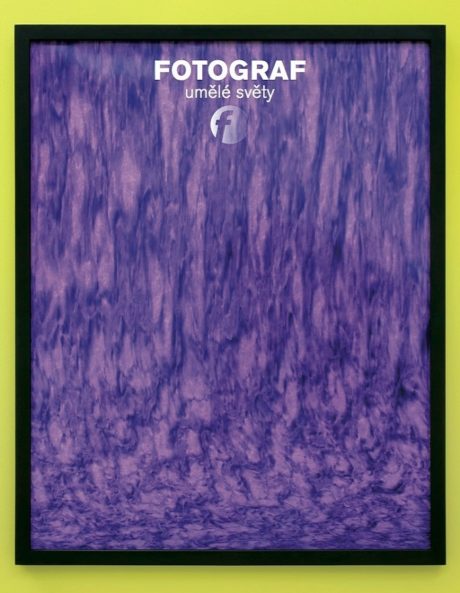Paris Photo 2013
The Last year Paris Photo headed in the direction of globalization. Similar to the most important modern art fair, Art Basel, which runs a successful sister fair called Art Basel Miami Beach, and since the last year Art Basel Hong Kong, the Parisian organisers decided to expand to the critical US market and in the spring they put together the first Paris Photo Los Angeles fair. Despite the fact that they were able to attract many Hollywood celebrities, in addition to collectors, it was clear that the California satellite event would not be a threat to the actual Paris Photo; not as concerns the number of visitors or significance. The latter in its 17th edition drew 55,000 visitors last year in mid-November to the Grand Palais on the Champs-Elysées. They came to view the exposition of 136 galleries and 28 publishing houses and antique stores from 24 countries. The level of interest (in the event) was so great that on its last day, they had to stop letting people in for a longer period of time, because the crowds of visitors greatly exceeded the numbers allowed by safety regulations.
Since the new director, Julian Frydman, took over the management of Paris Photo three years ago and moved it from the somewhat cramped space below the Louvre to the grandiose palace built for the 1900 World Expo, the event is now attended by some of the world’s most important galleries that had earlier ignored photography fairs. These include Gagosian, David Zwirner and Metro Picture; or rising stars like Cindy Sherman, Richard Avedon, Andreas Gursky, Richard Prince, Diane Arbus, William Eggleston and Cy Twombly. The exhibition spaces at the Grand Palais are expensive, however, and only the wealthiest galleries can afford to take part in Paris Photo. Still they have to pass through a network of selection committees. So it is natural that the majority of them do not wish to risk presenting lesser known artists and prefer to exhibit the proven works of world-renowned, classic artists like Weston, Man Ray and Callahan or those of very popular contemporary artists such as Edward Burtynsky, Gregory Crewdson, Vik Muniz and Vera Lutter. These are artists for whose works they can demand four- and five-figure prices in Euros. In some cases they can get six-figure amounts – the Bonn-based Feroz Gallery sold a period portrait of a confectioner, taken by August Sander in 1928, for 1 million EUR.
Galleries that cannot afford to take part in the increasingly expensive Paris Photo, or who did not make the cut in the strict selections by the expert judging committee, could also take part in a number of other expositions/fairs happening at the same time. The most important of these was Fotofever at the Caroussel du Louvre, i.e. in the space where Paris Photo took place for the first fourteen years of its existence. Fotofever, which for the second time expanded beyond its base in Brussels, had poorer promotion but still managed to attract 11,000 visitors. It offered them the work of mainly younger artists for prices from 500 EUR upwards. Among them were a number of quality pieces; however, also many kitschy nudes, attractive landscapes and conceptually-sterile, pandering digital manipulations. Mainly French, Dutch and Belgian galleries seized the opportunity to show their work in Paris during this extraordinary concentration of photographers, collectors, gallery owners and journalists from around the world. Participants also included the Japanese, Americans, Spaniards and Italians. Publishers, as is usually the case with every exposition/fair today, were also in the crowd. The latter, however, had as their main centre the independent fair, Offprint Paris, which now traditionally takes place in the building of the Academy of Fine Arts on the other bank of the Seine. Its concept is very simple: dozens of renowned publishers and photographers, who so far have published two or three of their own, self-financed publications, spread out their books, catalogues and oftentimes only their mock-ups on long tables and sell them patiently over the course of four days. They also look for distributors, co-publishers and critics. Today it is a common trend to publish one’s own books in a run of several dozens of copies, and almost anyone can afford to do so. On one hand, this leads to the production of many, thematically narrowly-focused, fresh publications that would never have any hope of commercial profit in a print run of several thousand copies. On the other hand, this increases the number of “photomaniacs”, who publish their own, completely banal publications.
An unusual, self-financed book also succeeded at Paris Photo itself during the competition for photographic publications organized by the New York magazine, Aperture. Rosângela Rennó’s book entitled A01 (COD. 19.1.1.43)– A27 (Cod. 23) beat out the enormous publication, War, by Anne Wilkes Tucker and Will Michels. The latter accompanied the exhibition of the same name at the Museum of Fine Arts in Houston. A01 also beat out the now almost cult book by Adam Broomberg and Oliver Chanarin, Holy Bible, wherein they included photos from the Archive of Modern Conflict in London as an accompaniment to the bible. The abundant participation of publishing houses and antique stores (in many of them rare Czech publications by Sudek, Drtikol and Tmej were available) attested to the great interest in photographic publications at the fair; as did the exhibition of photographic books on the topic of protests and revolutions that Martin Parr put together based on his renowned collection.
Other thematic, non-commercial exhibitions also received a lot of space this year; even if this time mainly on the first floor of the Grand Palais and not on the ground floor like last year. The house of Giorgio Armani, which was one of the fair‘s main sponsors, exhibited further samples from its photo collections based on the theme of water. The US bank, J.P. Morgan, showed its collection of 30,000 artistic works of the inter-media creations of Jeff Koons, Andy Warhol and Laurie Simmons at Paris Photo. Brazil’s Moreia Salles Institute bored many visitors with its uninteresting shots of Brazilian architecture.
The exhibitions of the represented galleries of course gained the most attention. That Kertész’s works were available in thirteen of the gallery exhibitions and that Diana Arbus‘ portraits could be bought in fifteen of them attested to the fact that many galleries had bet on tested favourites. Josef Sudek was also well represented by a number of US and West European galleries. New York’s Howard Greenberg Gallery showed exquisite period originals by Jaromír Funke and Jaroslav Rössler. Three galleries were selling increasingly expensive photos by Josef Koudelka. Four offered photographs from Miroslav Tichý (however at prices roughly half or two-thirds of those from past years; still however significantly more expensive that the amounts for which they are sold at Prague auction houses and galleries). With the minor exceptions of the aforementioned Koudelka, the work of Jitka Hanzlová in New York’s Yancey Richardson Gallery and Markéta Luskačová and Jindřich Štreit’s works shown by the London dealer, Eric Franck, contemporary Czech photographic creations were missing this time round at Paris Photo.
Of course this was certainly due to the fact that, for the second time, no Czech gallery was present at the fair. Meanwhile the work of some post-Soviet countries was represented. The Warsaw-based gallery, Asymetria, was once again able to take part thanks to support from the Polish Cultural Ministry. It mainly promoted the works of conceptual and inter-media pioneers, Zbigniew Dlubak and Jerzy Lewczyński and social portraits done by Zofie Rydet. It also exhibited contemporary, post-modern collages in a surrealist spirit created by Tomasz Szerzeń. It will, of course, be interesting to observe the fate of this agile gallery, because its „driving force“ Karolina Lewandowska recently became the second curator of Pompidou Centre’s photography collection. She just moved to Paris together with her husband, who was director of the former gallery. The private Vintage Gallery of Budapest traditionally represented Hungarian works. It was able to obtain rare photographs by André Kertész, Katy Kálman and Imre Kinszki. The Moscow-based gallery, Glaz, presented among other things the nudes of Alexander Grinberg, which during the prudish Stalin regime caused the artist to end up in photography prison. Nailya Alexander’s New York gallery had a number of works by classic and contemporary representatives of Russian photography in its exhibition. However, French, American, British and German galleries continued to dominate among fair participants. Still photographs from Scandinavia, South America, Japan and China were well represented. Indeed works from these parts of the world are now very trendy. We can also be pleased that the works of Pavel Mára, presented as part of the parallel Photo-Saint-Germain-des-Prés Festival at the Délire et formation Gallery and in the exhibition spaces of the Czech Centre, sparked considerable interest.
.
#23 artificial worlds
Archive
- #45 hypertension
- #44 empathy
- #43 collecting
- #42 food
- #41 postdigital photography
- #40 earthlings
- #39 delight, pain
- #38 death, when you think about it
- #37 uneven ground
- #36 new utopias
- #35 living with humans
- #34 archaeology of euphoria
- #33 investigation
- #32 Non-work
- #31 Body
- #30 Eye In The Sky
- #29 Contemplation
- #28 Cultura / Natura
- #27 Cars
- #26 Documentary Strategies
- #25 Popular Music
- #24 Seeing Is Believing
- #23 Artificial Worlds
- #22 Image and Text
- #21 On Photography
- #20 Public Art
- #19 Film
- #18 80'
- #17 Amateur Photography
- #16 Photography and Painting
- #15 Prague
- #14 Commerce
- #13 Family
- #12 Reconstruction
- #11 Performance
- #10 Eroticon
- #9 Architecture
- #8 Landscape
- #7 New Staged Photography
- #6 The Recycle Image
- #5 Borders Of Documentary
- #4 Intimacy
- #3 Transforming Of Symbol
- #2 Collective Authorship
- #1 Face


